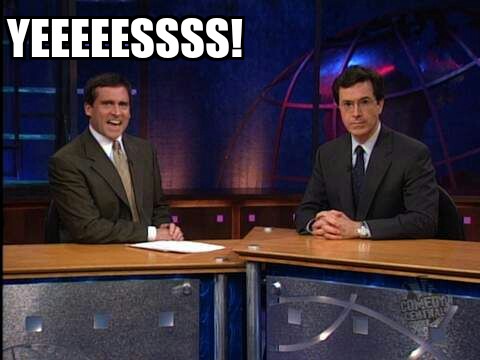Seventh Article in Secular Woman's Women's History Month Series
by Tammy Walker, read more of her thoughts at her blog Free Thinking Ahead
The history of women in STEM fields–science, technology, engineering, and mathematics—is a history of women overcoming gender discrimination. A number of recent studies have highlighted the gender disparity in these career fields. The US National Science Foundation's 2013 “Women, Minorities, and Persons with Disabilities in Science and Engineering” report notes that while women have studied STEM subjects in greater numbers since the early 1990s, and more women graduate from college than men, women still earn far fewer STEM degrees than men. Additionally, women, according to the report, hold more professorships than they have previously, though they are less than a quarter of STEM full professors.
Other studies have noted the persistence of bias against women. In 2012, Yale researchers published a study in PNAS that examined gender bias among STEM faculty. Faculty members were asked to rate student applications for a lab manager position. The student was rated more favorably when assigned a male name than when assigned a female name by the researchers. Still other studies point out gender as a factor in the treatment and consideration of faculty and students.
In spite of the disparities and biases, the history of women in STEM is also one in which women have been able to overcome societal obstacles such as lack of support and discrimination to contribute to our knowledge of the world. Highlighted here are just a few examples of the many women who have made an impact through their scientific work.
Scientists: Daughters, Wives, Sisters, Mothers
Before the 20th century, women often participated in scientific discussion and discovery though their male relatives and correspondents. Denied access to university educations, these women scientists and natural philosophers gleaned what they could reading books and learning from tutors, often their fathers and brothers. These women learned and contributed by engaging their counterparts, men and women, in conversation over household dinners, in salons, and through written correspondence. Although their work was most often done outside universities, women still added much to the discussion and to knowledge about their chosen topics.
Seventeenth century English aristocrats Margaret Cavendish and Anne Conway fit this pattern. Cavendish, also one of the first science fiction authors, discussed scientific matters with her husband, who supported her writing. Her work consisted of writing that critiqued the works of her contemporaries. Conway, educated at home by tutors, benefited from her brother's Cambridge education. He introduced her to Henry More; More and Conway corresponded on Descartes, and she influenced More's writing on the philosopher. Elisabeth of Bohemia, a seventeenth century princess, corresponded with Descartes directly, asking challenging questions of him. His book Principia is dedicated to her.
Astronomy, especially, was passed from husband to wife, father to daughter, brother to sister. Polish astronomer Elizabeth Hevelius and German astronomer Maria Winkelman, both working in the 17th century, assisted their husbands with mapping the sky and making discoveries. Caroline Herschel, sister to William Herschel, followed her brother into the field in the late 19th century. She assisted her brother in his work, and, though on her own, she discovered star clusters, comets, and nebulae.
Women Helping Women
While women working before the late 19th century often followed their male family members and correspondents into scientific studies, the women made important contributions in their own right. And as much as they needed the approval of men, they also benefited from the support of women. Mary Somerville, contemporary to Herschel, performed experiments and wrote on physics and mathematics. She introduced Ada Lovelace to Charles Babbage; Lovelace eventually wrote the first programs for Babbage's proto-computers. Lovelace also benefited from her mother's insistence that her daughter receive a rigorous education in mathematics, which allowed her to contribute to that field.
The 19th and 20th centuries saw increasing educational opportunities for women. One important factor in this rise was the establishment of women's colleges. According to the Women's College Coalition, almost all women scientists working during this time were educated at women's colleges. Included in the faculty at these colleges were women who had received their training from their male relatives, including American Maria Mitchell, an astronomy professor at Vassar. Mitchell learned astronomy from her father in the early 19th century; her parents believed that their daughters should have the same access to education as their sons. This permitted Mitchell to not only contribute to astronomy but to the education of women who would follow her into that field.
Women in STEM: Present and Future
The gender gaps in science, technology, engineering, and mathematics persist, but communities are making efforts to support women in STEM and girls who aspire to pursue careers in these fields. The National Engineers Week Foundation, for example, promotes Introduce a Girl to Engineering Day, most recently on February 21, 2013. Their programming included corporations and governmental agencies working with schools, clubs, and museums to invite girls to participate in hands-on activities, talks, and job shadowing. Women in Technology, an organization whose aim is to advance women working in technology, has a committee that supports girls who are interested in STEM careers. Many local groups exist to support women in STEM fields as well.
Despite the relatively low numbers of women in STEM fields, there is reason for optimism. The US National Science Foundation's 2013 report also indicated that more women are earning PhDs in mathematics and computer science than in previous years, and women study biology and the social sciences at about the same rate as men do. The history of women in STEM is a history of women facing challenges, but it is also a history of progress.




